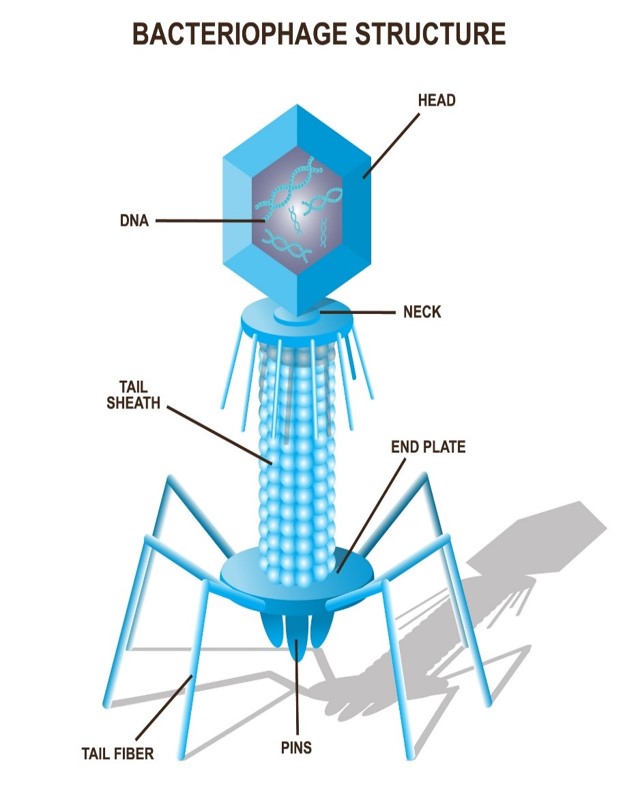Virus - Bacteriophage T2
Description:
Scientific name for bacteriophage T2 is Phago virus secundus. It is a colliphage as it infects colon bacillus bacterium E. coli. Bacteriophage was discovered by Twort in 1915.
Structure
Differentiated into head and tail.
The head is hexagonal in outline and icosahedral pyramidal ends.
Head is composed of outer protein coat (capsid) composed of about 2000 subunits of proteins (capsomeres).
Nucleoid consists of double stranded DNA molecule.
The tail is cylindrical. It has got an outer protein sheath of about 200 subunits.
The tail sheath has the capacity to contract longitudinally.
Lower end of tail consists of a hexagonal tail plate (base plate or end plate).
Presence of six tail pins at each corner to which attached six protein fibres known as tail fibres.
Normally tail fibres remain folded inside the tail core. When extended they help in the attachment of the virus to the bacterium.
Tip of the tail bears some molecules of hydrolyzing enzyme – Isozymes.
Head and the tail are joined together through a short neck bearing a circular proteinaceous disc called collor.


